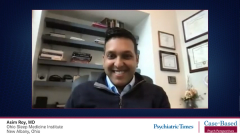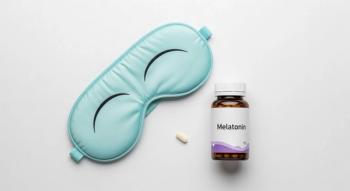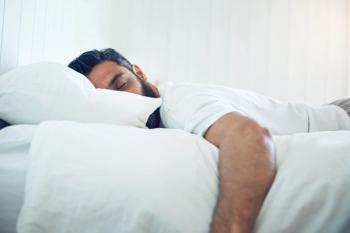
Therapeutic Options for the Management of Narcolepsy
Experts in sleep medicine share insight on initiating treatment for the management of narcolepsy.
Episodes in this series

Richard K. Bogan, MD, FCCP, FAASM: When we talk about orexin and orexin downstream, hitting dopamine, norepinephrine, and all that, how does that translate into therapeutic options? Would you review top-line categories and mechanisms of action? We’ll talk later about why we choose which ones.
Asim Roy, MD: What’s amazing, and what I’m grateful for, is that in the last few years, a plethora of options have started to emerge in our toolbox. Even 5 to 10 years ago, we were pretty limited in what we could offer. From the 1950s, ’60s, and ’70s, stimulants were the mainstay of therapy. Dopaminergic agents would increase the amount of adrenergic or noradrenergic neurotransmitters in the brain. They’re effective, but they also come with adverse effects. We have to weigh that in terms of tolerability, the impact on anxiety, cardiovascular impact on heart rate, blood pressure, jitteriness, and things like that—if you overstimulate someone, essentially.
Richard K. Bogan, MD, FCCP, FAASM: Tolerance is another 1.
Asim Roy, MD: Yes, tolerance is another big issue we’d have to deal with. The stimulant world was where we were originally. In the 1980s and early ’90s, modafinil came out. At that time it was the newest therapy in that arena, in terms of a dopamine reuptake inhibitor. Around the same time was the development of atomoxetine, which is a norepinephrine reuptake inhibitor. We had newer tools that don’t necessarily increase the amount of dopamine or norepinephrine. They just block the reuptake to maintain a sustained level. Even today, modafinil and its sister drug armodafinil are considered first-line agents. They’re generic, they’re inexpensive, and they have a pretty good therapeutic profile with a relatively low adverse effect profile. Headache is the most common thing we hear. It tends to get better as time goes on for most patients. Sometimes nausea. Anything else is possible, but headache tends to be the 1 we hear most commonly.
The dopamine reuptake inhibition from adapting to armodafinil was the mainstay of therapy. In the early 2000s, sodium oxybate came onto the market. That’s when it was FDA approved for cataplexy and daytime sleepiness and narcolepsy. For a long time that was essentially our arsenal. In the last few years, we’ve opened our neurotransmitter targeting to the histamine space. To this point, we’ve been able to target dopamine, norepinephrine, and serotonin, but we don’t typically see as robust of an alerting effect with serotonergic agents. Sometimes we see alerting effects with venlafaxine, but we don’t rely on most serotonergic agents for alerting. They have potential benefit from a cataplexy perspective but not from an alerting mechanism.
About 4 years ago, pitolisant came onto the market. It was available in Europe originally, and then FDA approved it in the United States. This is a histamine agonist. It has a weird mechanism of action. It’s interesting in terms of how it works. Most people know histamine from the antihistamine world—most commonly H1 receptor antagonist and H2 receptor antagonist. We know how they work: diphenhydramine or some of the newer antihistamines typically target that H1 receptor; H2 is predominantly in the gut. Pitolisant works is in the brain, on H3. H3 is commonly located in the presynaptic cleft, in the histamine neurons, which is in the TMN, the tuberomammillary nucleus. It’s adjacent to where the orexin neurons are, and it’s the only place in the brain where histamine is produced. These H3 receptors are normally self-regulating. If your brain is making enough histamine, histamine will then bind to H3 and tell the neurons to stop making more; we have enough. Pitolisant blocks that H3 receptor from histamine binding to it. The neuron will continue to make histamine, so there’s no self-regulation anymore. It also has an agonist effect, so it will tell the neuron to produce even more histamine than it normally would. With this downstream effect, we’re getting increased histamine in the synaptic cleft, which will bind to H1 in the brain. If you think of antihistamines, the ones that cross the blood-brain barrier we typically know will make you very sleepy. One of the most common over-the-counter sleep aids targets antihistamines. It’s important to think about what crosses into the brain, what stays systemic. From a pitolisant standpoint, if you can avoid antihistamines that don’t cross into the brain, it’s very effective. It does not go systemically because H3 isn’t present throughout the body as much as H1 or H2 is.
Transcript Edited for Clarity
Newsletter
Receive trusted psychiatric news, expert analysis, and clinical insights — subscribe today to support your practice and your patients.




















